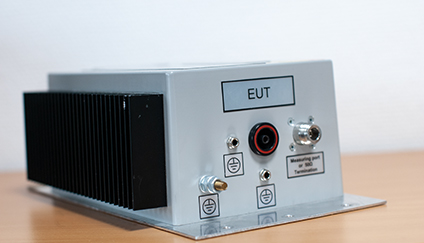LISNs/AMNs are used to provide a standardized impedance for the device under test and to measure conducted interference emissions. As an experienced calibration and testing service provider in the field of electromagnetic compatibility (EMC) and electromagnetic immunity (EMI), we have many years of experience in dealing/working with LISNs/AMNs and LISN calibration.
Therefore, we know what is important and offer this service also to our customers. With our LISN calibrations you also receive a conformity assessment and thus proof whether your devices comply with the manufacturer's specification, a standard or your individual specifications.
For the testing of conducted interference emissions of DUTs, LISNs/AMNs have to fulfill the following functions:


Furthermore, LISNs/AMNs vary in the design of the connectors. For a proper calibration the measurements must be corrected for the influence of the adapters of the type-N system of the vector network analyzer (VNA) to the connection system of the LISN/AMN. For this purpose two symmetrical adapters, respectively a combination of male and female as symmetrical as possible, must be used for the calibration. The measurement equipment for the following connection types is provided by us as standard:
In general, when calibrating LISNs/AMNs, the impedance of a port and the transmission between two ports are of interest. We are internationally accredited by the Deutsche Akkreditierungsstelle GmbH (DAkkS) within the ILAC Mutual Recognition Arrangement (ILAC MRA) for the measurement categories reflection, transmission and phase. Based on this measurement, the relevant parameter for the conformity assessment result:
The corresponding equations can be found at the end of this page.
